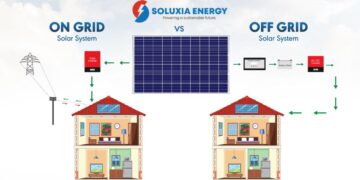A cobble driveway is a timeless and elegant addition to any home. Known for their durability, classic appearance, and ability to enhance a property’s value, cobbled driveways remain a popular choice for homeowners looking to create a visually appealing entrance. Whether you prefer a traditional or modern look, cobblestones provide a charming and practical solution that stands the test of time.
In this article, we will explore the benefits of a cobble driveway, how it compares to other materials, and why it could be the perfect option for your home.
What Is a Cobble Driveway?
A cobble driveway is made from natural stone or concrete blocks designed to resemble old-fashioned cobblestones. These stones are arranged in a pattern and fitted together to create a beautiful and durable surface. Traditional cobblestones were originally used for streets and pathways centuries ago, making them one of the oldest paving materials. Today, they offer a perfect blend of historic charm and modern functionality.
Cobblestones come in a variety of materials, including:
- Granite – A highly durable and long-lasting option with a premium finish.
- Limestone – A softer, natural stone that offers a rustic look.
- Sandstone – A more affordable choice with a natural texture.
- Concrete Cobblestones – Designed to mimic real stone but at a lower cost.
Benefits of a Cobble Driveway
1. Timeless Aesthetic Appeal
One of the main reasons homeowners choose a cobble driveway is for its classic and stylish appearance. The natural texture and colour variations of cobblestones create a charming, old-world feel that complements both traditional and modern homes. Whether you live in a countryside cottage or a contemporary urban property, a cobbled driveway adds a touch of sophistication.
2. Exceptional Durability
Cobblestones are incredibly hardwearing and can withstand heavy traffic, making them an excellent choice for driveways. Unlike tarmac or concrete, which can crack over time, cobbles are resistant to weather damage, wear and tear, and heavy loads. This means your driveway will maintain its beauty and functionality for many years with minimal upkeep.
3. Low Maintenance
A cobble driveway requires very little maintenance compared to other driveway materials. The natural stone or concrete blocks are easy to clean, and their durability means they rarely need repairs. Regular sweeping and occasional power washing will keep your cobbled driveway looking fresh.
4. Permeability & Drainage
Cobblestone driveways are an environmentally friendly option as they allow rainwater to drain naturally. Unlike solid concrete or asphalt driveways, which can lead to pooling and flooding, cobbles have gaps between them that let water seep into the ground, reducing the risk of water damage.
5. Increased Property Value
A well-designed cobble driveway can significantly enhance your home’s curb appeal and increase its market value. Buyers are often attracted to homes with high-quality, long-lasting driveways, making cobblestones a great investment for the future.
6. Versatile Design Options
With various shapes, sizes, and colours available, cobblestones offer endless design possibilities. You can create patterns such as:
- Herringbone – A traditional interlocking design that provides extra strength.
- Circular or Fan Patterns – A stylish choice that adds character to your driveway.
- Random Cobblestone Layouts – A more natural and rustic look.
Cobble Driveway vs Other Driveway Materials
When deciding on the best material for your driveway, it’s important to consider the pros and cons of each option:
| Material | Pros | Cons |
|---|---|---|
| Cobblestone | Highly durable, elegant, low maintenance, great drainage | Higher initial cost, longer installation time |
| Concrete | Affordable, smooth finish, easy to install | Prone to cracking, less aesthetic appeal |
| Tarmac | Budget-friendly, quick installation | Can soften in hot weather, requires resurfacing over time |
| Gravel | Cheap, easy to install, great drainage | Requires regular maintenance, stones can shift |
| Block Paving | Stylish, customisable, durable | Can be expensive, needs occasional cleaning |
A cobble driveway is a great option if you want a long-lasting, high-quality, and visually appealing surface that requires minimal maintenance over time.
Installation Process of a Cobble Driveway
The process of installing a cobble driveway involves several key steps:
- Preparation & Excavation – The existing surface is removed, and the ground is prepared by digging down to the required depth.
- Base Layer Installation – A strong base layer, usually made of crushed stone or hardcore, is laid down and compacted to provide stability.
- Sand & Bedding Layer – A layer of sand or mortar is spread to create a smooth, even base for the cobbles.
- Laying the Cobblestones – Each stone is carefully arranged in the chosen pattern and pressed firmly into place.
- Sealing & Finishing – Once the stones are set, the joints are filled with sand or mortar, and a sealant may be applied for added protection.
Is a Cobble Driveway Right for You?
Choosing a cobble driveway depends on your personal preferences, budget, and property style. If you’re looking for a luxurious, durable, and low-maintenance driveway that enhances your home’s appeal, cobblestones are an excellent choice. While the initial cost may be higher, the long-term benefits make it a worthwhile investment.
Final Thoughts
A cobble driveway offers unmatched elegance, strength, and longevity, making it a fantastic option for homeowners who want a driveway that stands the test of time. Whether you’re building a new driveway or upgrading an existing one, cobblestones provide a classic charm that never goes out of style.
If you’re considering installing a cobble driveway, consult with a professional landscaper or driveway specialist to ensure the best results. With proper installation and maintenance, your cobbled driveway will remain a stunning feature of your home for many years to come.


























